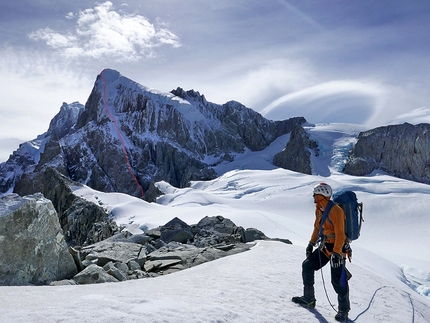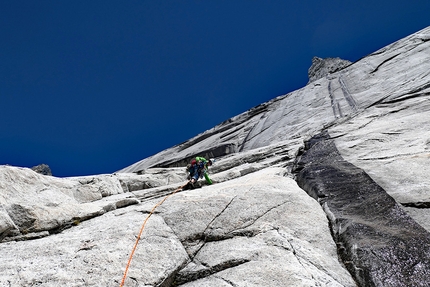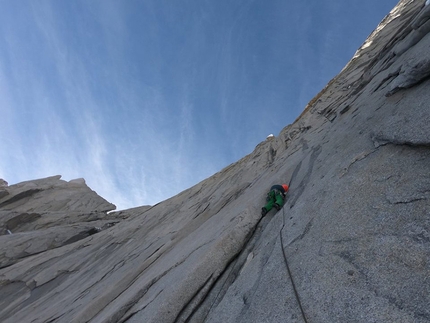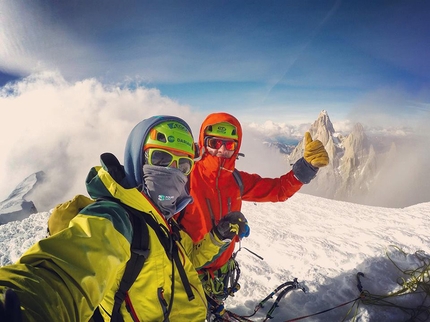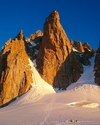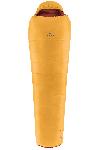Germans climb new route up Aguja Val Biois in Patagonia

 1 / 8
1 / 8 archive Tom Ehrig
archive Tom Ehrig
After almost 4 weeks in Patagonia, Lutz, Felix and I dreamt of finishing our trip with an ascent of Fitz Roy via the Franco-Argentina. The actual goal of our trip had been to repeat Royal Flush on the East Pillar of Fitz Roy, but this dream vanished when we examined the last weather forecast. Ever since our arrival in El Chaltén there hadn't been a decent weather window which would have allowed us to attempt this climb. In addition, in this season the walls were plastered with more snow and ice than usual. That's why we’d used several short weather windows to climb alpine routes like the Whillans-Cochrane on Ag. Poincenot or the Amy-Vidailhet on Ag. Guillaumet.
So we only had a few days left in Patagonia and a last weather window of not even 48 hours. We took the decision to try the Franco-Argentina down in the valley. But when we arrived at the SW shoulder, the so-called "La Silla" which marks the start of the actual rock climbing, after the six hour approach, all the cracks and some of the walls above us were covered with ice. In these conditions, even the "normal route" on Fitz Roy would have been too difficult for us. So we rappelled, fairly disappointed, and stomped back to our snow cave at Paso Superior.
Although we had been on our feet for more than 12 hours and already had a fair bit of elevation gain in our legs, I was extremely motivated to get something done on our last climbing day. So with a little persuasion I managed to convince Lutz to come with me to the base of the east face of Ag. Val Biois, the northern neighbor of Fitz Roy. Back home I'd seen a picture of this mountain and had noticed a potential continuous crack system which runs diagonally through the 500 m high east face; according to my research nobody had ever climbed it before. Even through my binoculars we couldn’t make out any details so we really didn't know what to expect and whether it would be very icy, wet or loose. But when we finally stood below the wall, we were greeted with a big surprise: except for a few meters above the Bergschrund, the line was dry and from below it looked climbable. So I started climbing immediately and fixed our single rope after 80 meters, so that the next morning we'd ascend back up in the dark in order to give us more time for the first ascent.
The next morning, January 15th, we were back at the base at 5:30am - but this time all three of us - and we returned to my highpoint. During the previous day I had already come across an old Fifihook and abandoned fixed ropes which led into the big, ice-filled gully in the middle of the wall. As a result we decided to keep to the rock and climbed the next 4 pitches about 20 m to the left of the big gully up flakes, cracks and dihedrals to the prominent pillar halfway up the wall. The 5th and 6th pitch in particular offered brilliant climbing up to French 6b. Unfortunately, the weather wasn’t ideal. Although the wall is in the sun in the morning, this didn’t reach us. Quite the opposite: it kept snowing lightly, so much so that at some points I not only had to scrape ice out of the cracks, but also had to brush a thin layer of snow off the holds.
On top of the pillar I discovered two heavily rusted pitons on the side, where the big chimney ascends. So it seems as if the chimney line to the right of our route was climbed previously up to the pillar. Above this point we didn't find any signs of a previous attempt and encountered virgin rock.
From the pillar things got steeper. I climbed a couple of demanding face moves past some hollow flakes before moving slightly to the right in order to reach a dihedral which we followed for the next 3 pitches. These pitches offered really good but strenuous moves up to 7a, some hand jams and laybacking, but mostly finger cracks with one short slightly overhanging section on pitch 8. While I fought my way up, my friends were freezing down below at the belays. Fortunately, with the end of pitch 10 we reached easier ground, so I changed back to mountain boots and climbed the last two pitches up mixed terrain to the ridge line, which we reached at 8:15pm and where our route joins Filo Sur, the normal route to the summit.
After having heard the storm roaring through Col del Bloque Empotrada all day long, while we were sheltered on the wind-protected eastern side of the mountain, we realised there was no way we'd be able to climb the last 100 m up the ridge to the summit in these strong winds. And because we knew that the weather would be getting even worse in the next few days and that consequently we’d have to abseil down no matter how high we were, we hadn’t taken any bivouac gear with us. So even though it was a tough decision, we rappelled down from there. Nevertheless, we were very happy to have climbed our new route up to that point. And I was particularly happy, because I had climbed every pitch onsight and we had established the new route completely clean - except one piton 1 meter above the Bergschrund to mark the start.
The descent down the Col del Bloque Empotrada approach ran smoothly, but back at the base the snowstorm began. With some luck we partially located the tracks we'd made during the morning approach and so at midnight we stumbled, completely exhausted but totally happy, back into our snow cave.
We named our new route La Torcida, The Slanting in English, because of the diagonal line the route takes and also as homage to our friendly host Paolo, who runs the La Torcida campsite down in El Chaltén.
With this new route a huge dream has come true from me. To be able to climb such an amazing line on a face that is clearly visible from afar is actually quite unique. And doing so in the best possible style, namely onsight and completely clean, is the icing on the cake. Although we failed to reach our original goal, we nevertheless had a very successful climbing trip to Patagonia. And we can still try to ascend Fitz Roy on our next trip - but by then this line might already have been climbed.
by Tom Ehrig
TOPO: La Torcida, Fitz Roy, Patagonia
Felix Getzlaff (23), Lutz Zybell (36) and Tom Ehrig (29) all come from close to Dresden, Germany.
Link: FB Tom Ehrig



 Copia link
Copia link
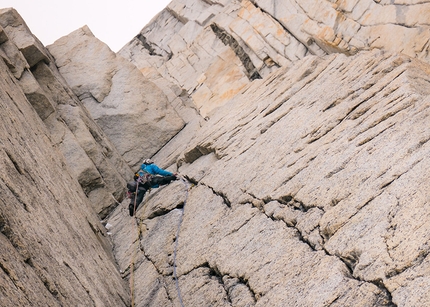
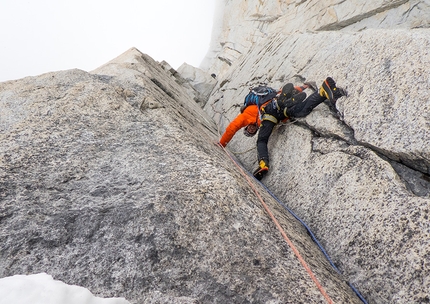
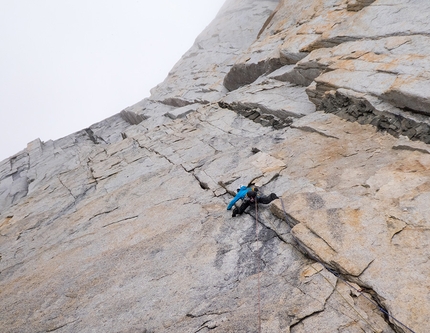
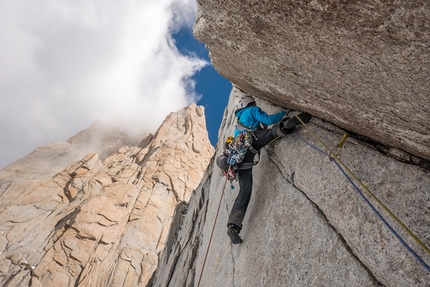
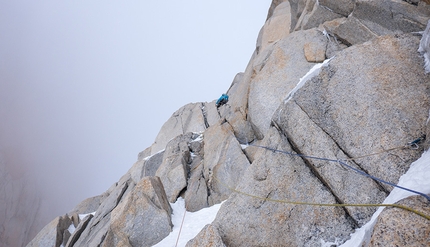
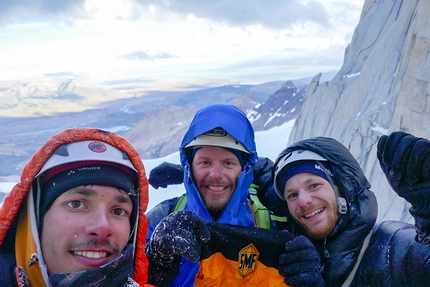
 See all photos
See all photos